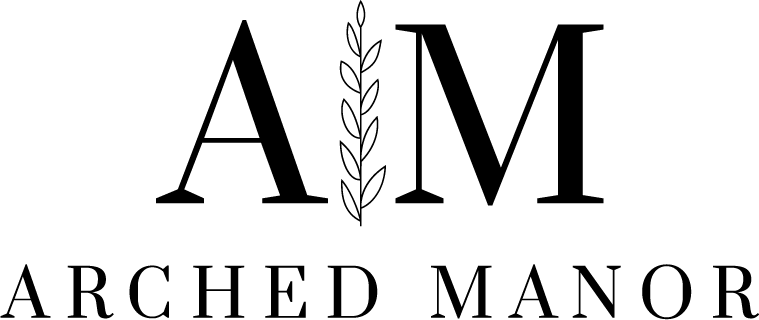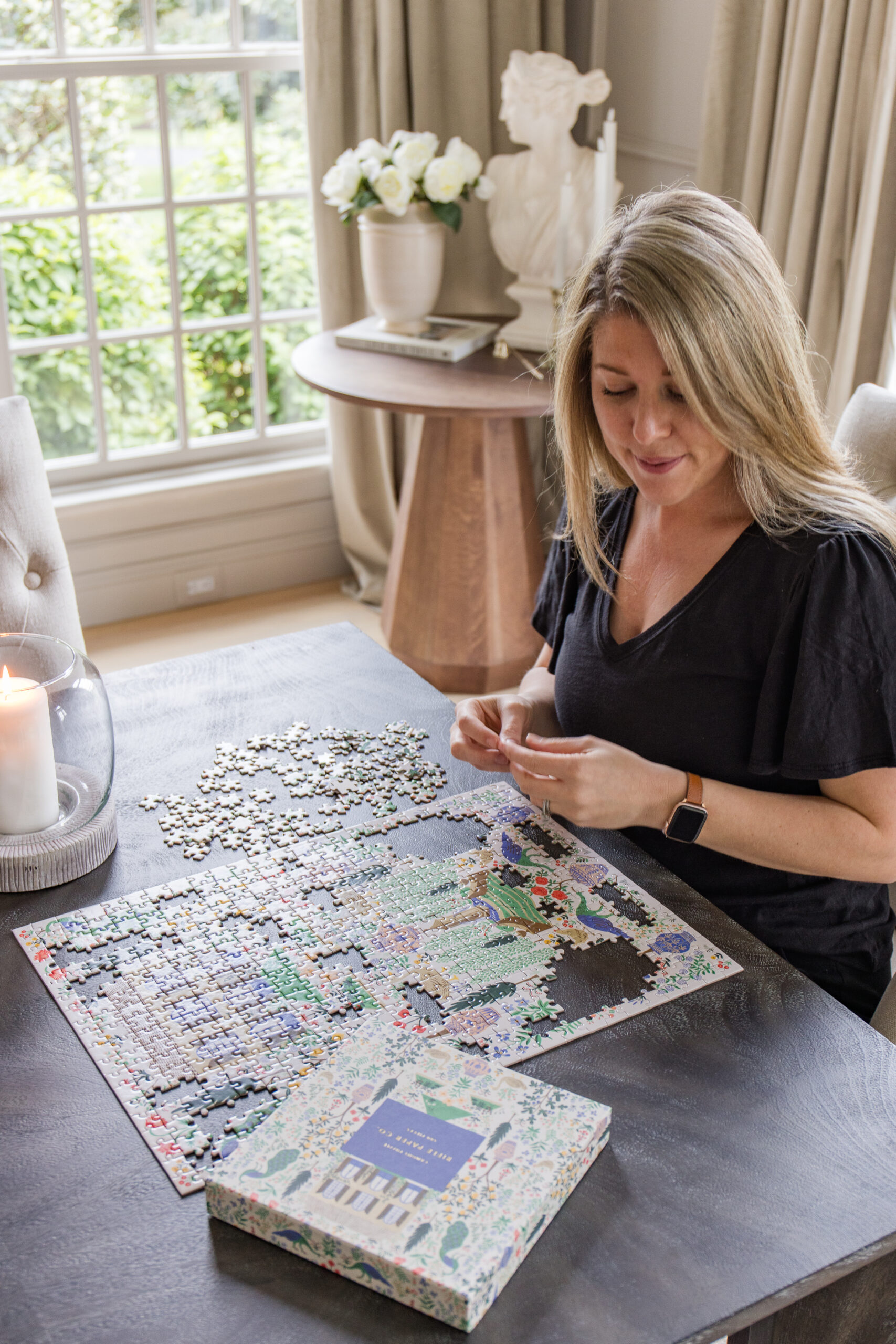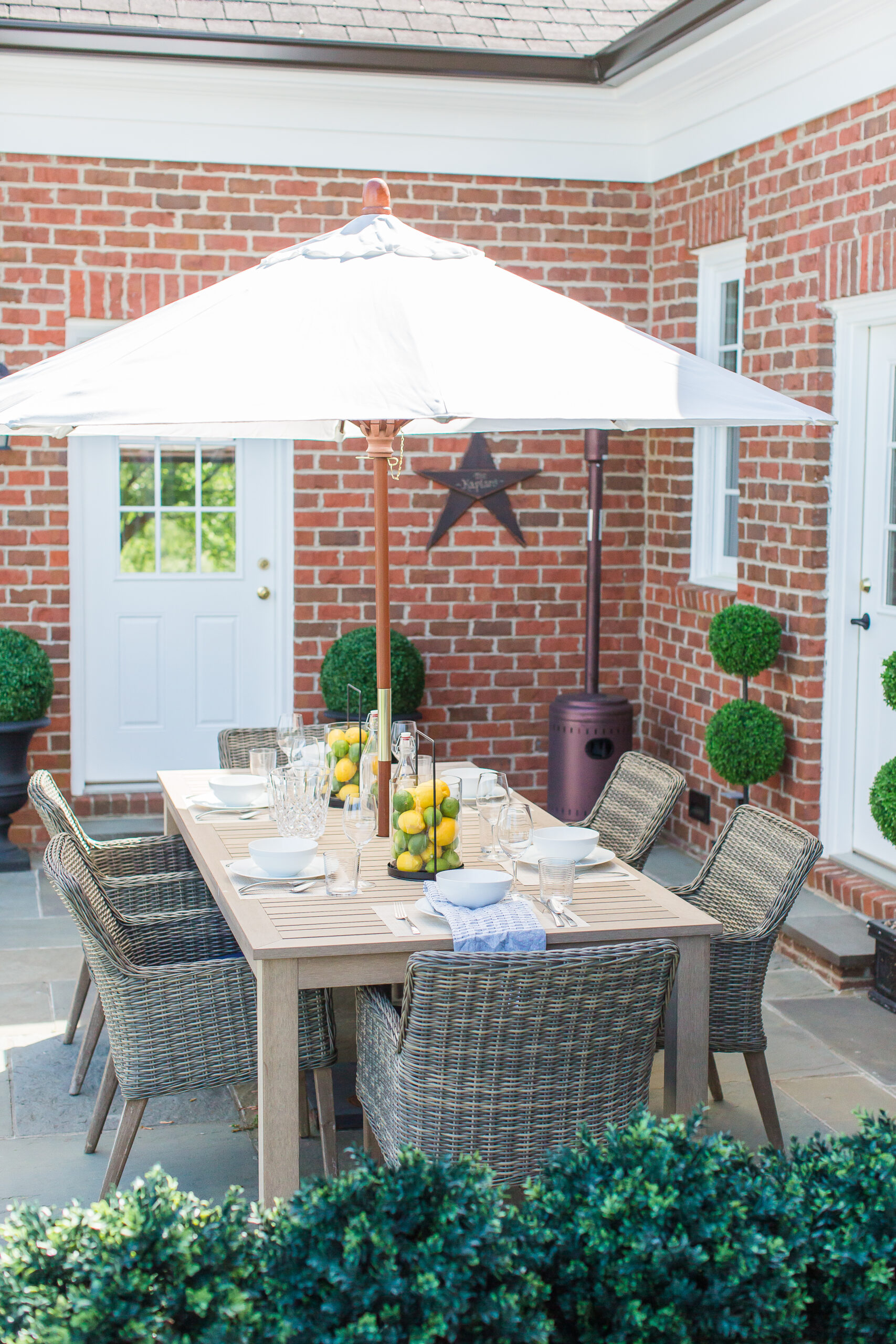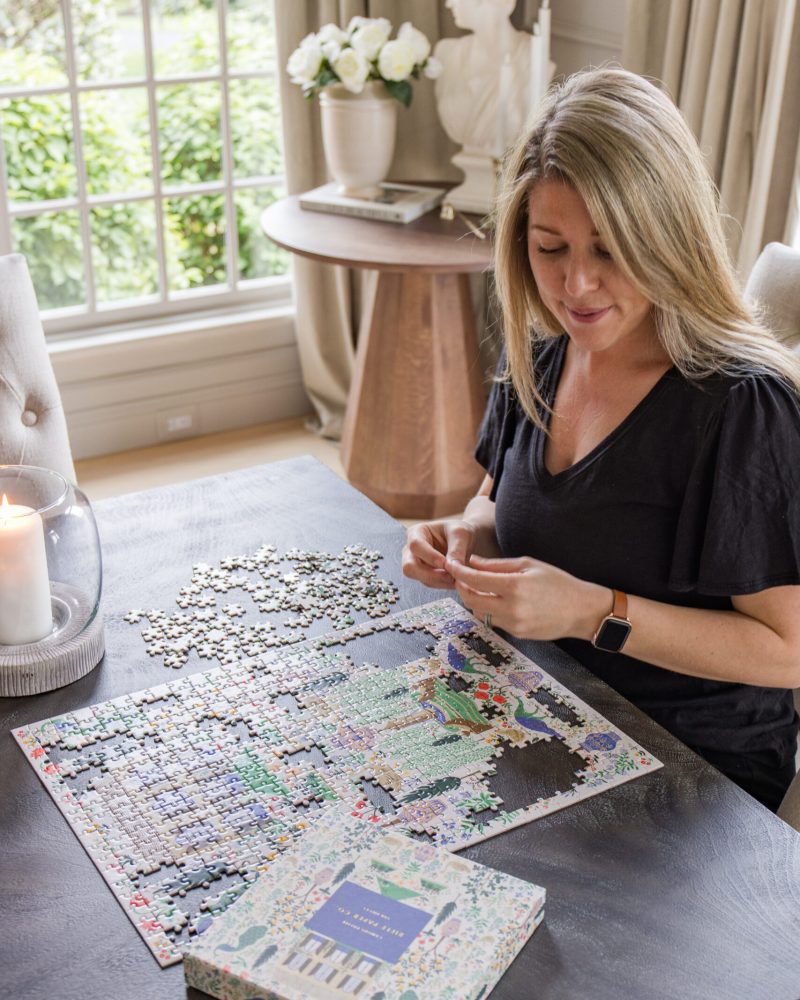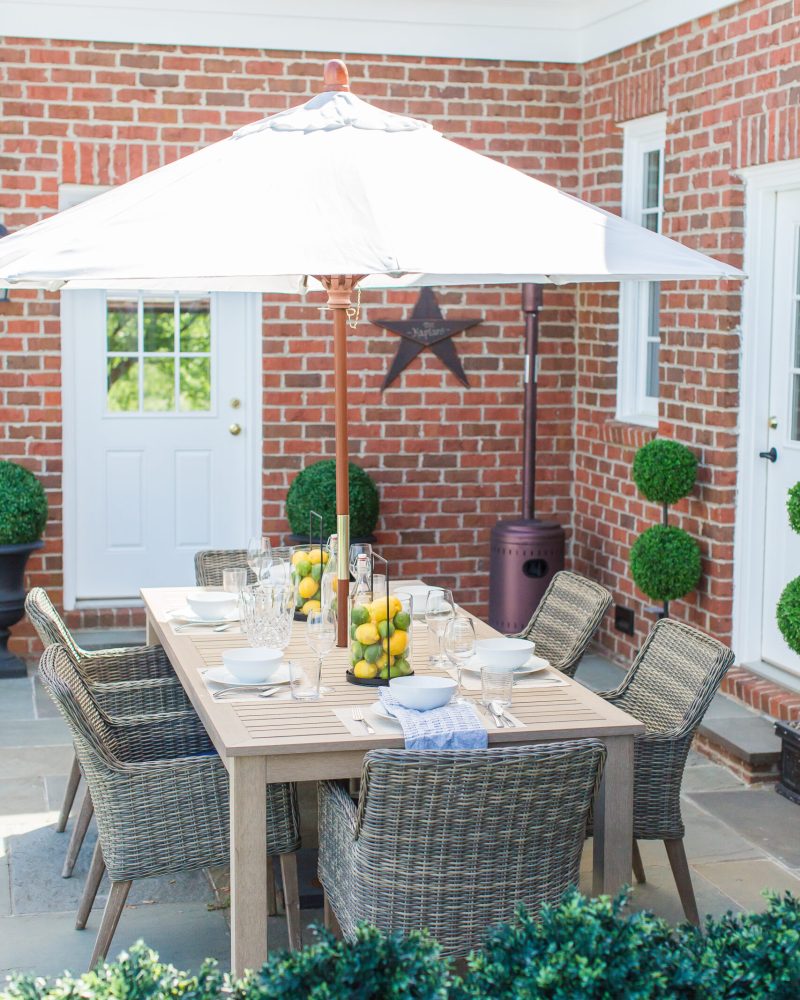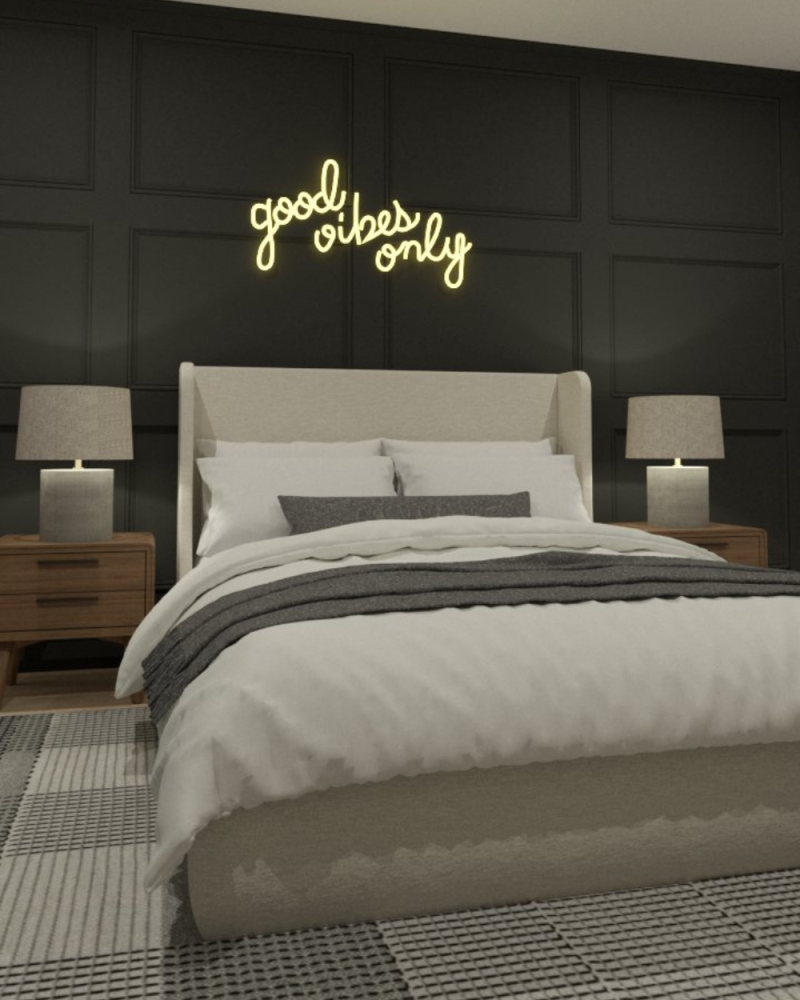
There are several ways to fix drywall holes depending on the size of the damage in your wall. Today, we are going to walk you through the steps to repair and patch holes the size of a coin or larger.
Don’t be alarmed by the number of tools or steps needed to fix drywall holes, it is actually easier to do than you may think. You end up doing it enough and it will be like learning to ride a bike!
Affiliate links may be used throughout this blog post – read our policy here.
Tools needed to fix drywall holes:
- Drywall
- Measuring tape
- Drywall screws
- Drill
- Drywall tape
- Joint compound
- Putty knife
- Sandpaper
- Drywall rasp (optional)
When getting the tools or supplies to fix drywall holes, one thing to make sure is that you use drywall that is the same thickness as the wall you are patching. The most common thicknesses are ¼ inch, ½ inch, ⅜ inch and ⅝ inch.
Step 1: Cut a clean area where the hole needs to be patched
Depending on what caused the hole in the area of the drywall you are patching, you may want to clean the outline of the hole and cut out any rough edges to make sure you can easily fit a drywall patch in the hole.
This sometimes may require you to make the hole bigger, which sounds strange, but it will help in the end to create a strong patch with a smooth finish. Also, we have found it easier to patch a square hole versus a round or odd shaped hole.
Lastly, before cutting a larger area, make sure to check for any obstructions like ductwork, pipes or wire that you could risk cutting into.

Step 2: Measure the size of the hole
There are a few ways to measure the patch that needs to be cut to fill the hole in the wall. We typically go with the classic method of using a tape measure and measure the height and width (another reason to cut the hole in the wall into a square) and then trace those measurements onto a new sheet of drywall and cut it out.
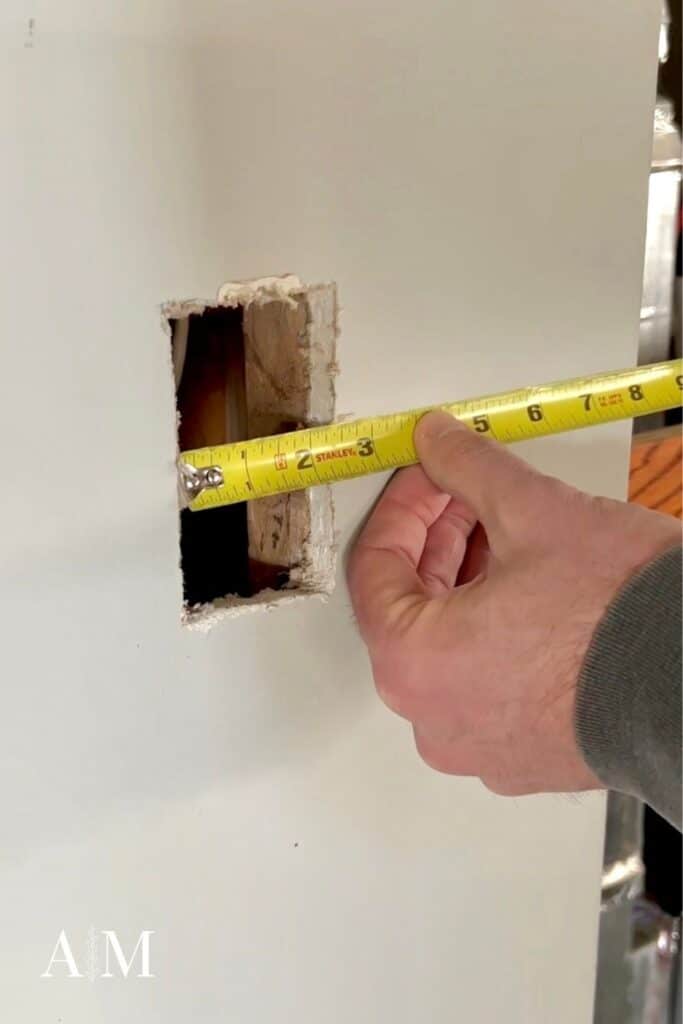

Step 3: Install wood supports to fix drywall holes
When you go to fix drywall holes the most important thing is to make the patches as strong as possible so you will not need to repair them again in the future. The way to make this happen is to screw in wood supports.
We typically find scrap wood in our garage and then place it in the hole and behind the drywall. We place a screw (or 2) in the top of the hole to secure the scrap wood, and a screw (or 2) at the bottom of the hole.
This wood support will give you the perfect strong foundation to attach your drywall patch.

Step 4: Attach the drywall patch
Place the new patch in the hole. If there are any adjustments that need to be made to the size of the patch, keep a utility knife or drywall rasp nearby. Then use drywall screws to attach the patch to the wood support you just installed. The number of screws used will depend on the size of the patch and support.
Pro tip: Make sure the screws are sunk in just below the surface of the drywall so that they are covered in compound for a smooth finish.
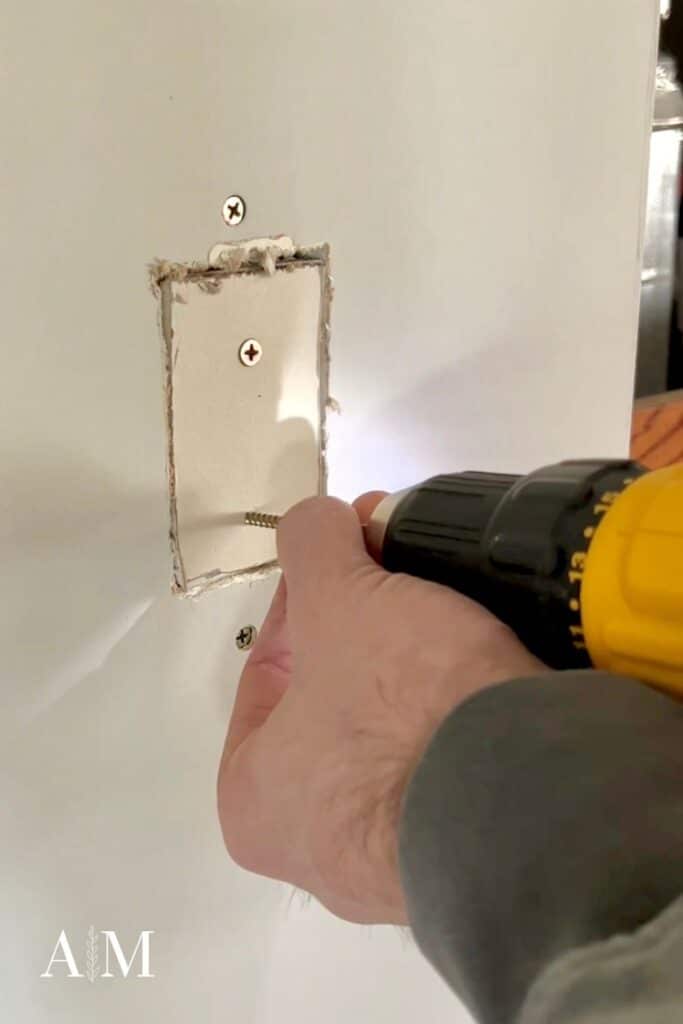
Step 5: Tape the seams
Once the patch is secure and in place, it is important to tape the seams. By taping the seams you are maintaining the integrity of the patch you installed. If you don’t use tape, you are likely to see the seams once the compound dries or even see cracks eventually in the drywall.
There are two different types of drywall tape you can use, paper tape or mesh tape. Both work great and whichever you choose is totally personal preference. Paper tape has been around for forever and has stood the test of time, but is not self-adhesive so is a bit more effort to mud the wall first, tape, and mud over. Mesh tape is easy to use, has one self-adhesive side for easy installation, and is mold and moisture resistant. Either way, always make sure you use tape to fix drywall holes.
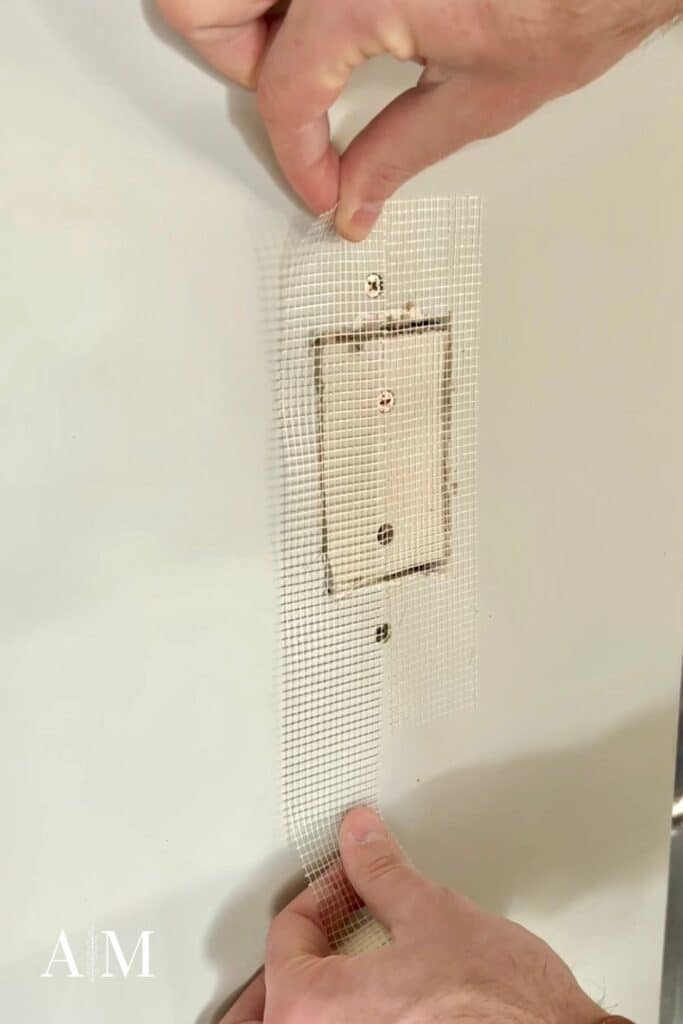
Step 6: Apply joint compound to fix drywall holes
Now it is time to apply the first coat of joint compound, also known as mud. Using a mud pan full of compound, start coating the area with a layer using a putty knife. Make sure to cover the entire patch and taped areas to fix drywall holes. Let it dry completely and then roughly sand down all the rough spots (don’t worry too much about making smooth at this step, save that for the second coat). We recommend waiting at least 24 hours for the compound to dry, but make sure to check the directions on the container before sanding.
Next apply a second coat that goes out around 6 inches wider than the first coat. Repeat until you are satisfied with the results. You should always apply at least two coats of mud and make sure to sand everything enough so that the edges are feathered and blended into the rest of the wall.


Step 7: Paint
Before painting, make sure to apply a layer of primer over the area. Once dry, get out your paint supplies and paint over the dried patch! For painting tips and best practices make sure to check out this blog post! For all the paint colors we love and have used in our home like ‘Collingwood’, ‘Roycroft Bronze Green’ and ‘Hale Navy’, make sure to to check out this blog post.
Common mistakes made when you fix drywall holes
Don’t ask us how we know about these mistakes, and yes, we may be assuming that they are common. However, learn from us on things to look out for when you fix drywall holes.
- There are 2 sides to drywall, make sure the correct side is facing outwards.
- If working on an outside corner, ALWAYS make sure to use a metal corner piece and then drywall over that.
- Always use drywall tape (this one we knew :))
- Don’t overly sand the first layer of mud. Just enough to knock down any peaks or cliffs.
- Dust gets everywhere, so make sure you have a good vacuum nearby with a clean filter.
- Wear a mask to prevent dust inhalation.

About The Authors
John and Megan are the founders of Arched Manor, which is a passion-project turned business featuring home design, renovations, DIY tutorials, décor, e-Design, and 3-D rendering services. This married couple lives in Leesburg, Virginia, and is currently renovating The Arched Manor, a brick colonial house built in 2000.
